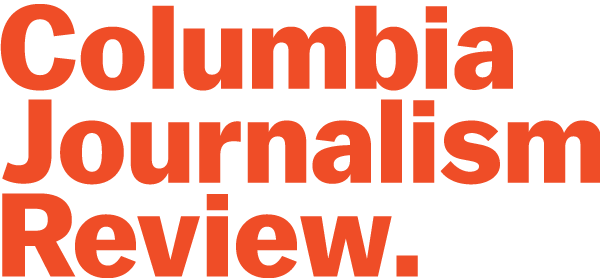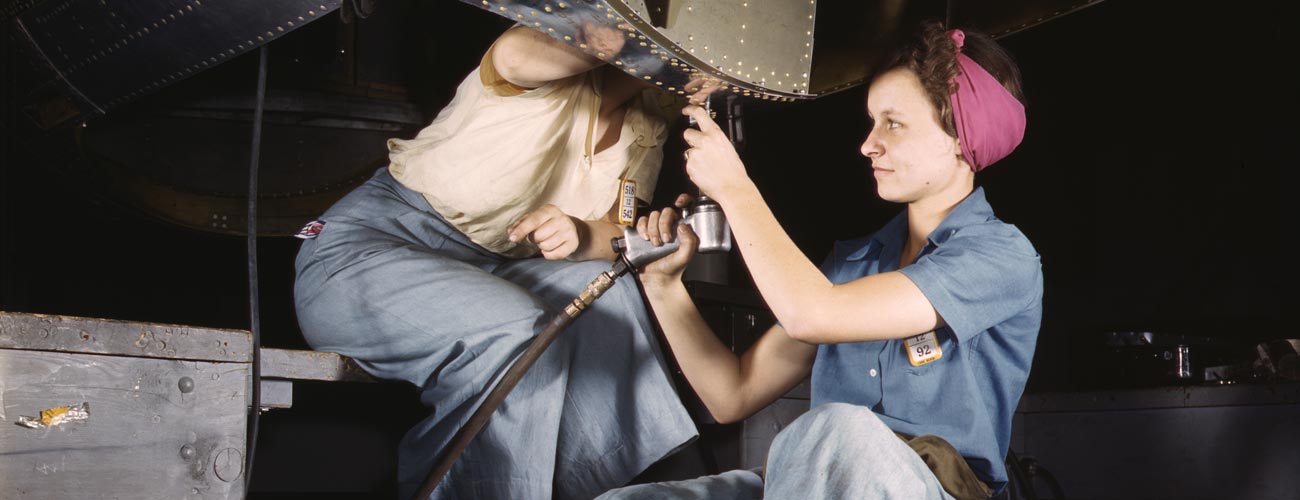In July, a Vice crew visited Umoja, a Kenyan village where no men are allowed. They were there to document the Samburu women who built Umoja to escape the strict patriarchal ways of their tribe, which include female genital mutilation as a marriage rite. It was to be one of the first pieces produced for Broadly, a new women’s vertical from Vice that might best be described as macho-feminist. In the documentary, a Broadly correspondent interviews a teenage girl who came to Umoja to evade a forced marriage.
“Do you want to find a husband?” the reporter asks.
The girl shakes her head no.
“Me neither,” says the correspondent, and they high five.
Broadly was announced in early 2015 and launched in August, joining several recent media sites for millennial women that are making some interesting moves. Examples include The Skimm, a daily email news brief, and Refinery29, a fashion blog-turned-media company that’s expanding into news.
Earlier women’s sites like Jezebel, xoJane, and Bustle share a model inspired by the pre-2010 blogosphere: lots of confessional “It happened to me” posts, celebrity gossip, and personal takes on social issues. The more recent crop of sites seem to be getting increasingly serious: They’re paying more attention to news and politics, especially on women’s and social issues, but packaged with the right amount of edge (Broadly), twee (Refinery29), and Sex and the City references (The Skimm) to be taken seriously by the savvy millennial woman.
“It now seems patronizing to say that we’re only interested in shopping and fashion and lipstick,” says Joanna Coles, editor-in-chief of Cosmopolitan.
According to a 2015 report by The Media Insight Project, millennials are avid news consumers, with 69% saying they read news daily. But women are more likely to follow social issues, healthcare and education, while men pay more attention to national politics and science. Jennifer Benz, who authored the report, says this explains the oft-cited finding that men follow the news more regularly than women. “It’s not that women are less engaged in news than men,” Benz says, “but the news means different things to different people.”
The turn toward more news reporting for women could be a sign of progress. Millennial women are more likely than any previous generation to be educated, employed, and single. They’re more likely than their male peers to have graduated from college, their income is rising relative to men’s, and they’re having children later. This adds up to a generation of twenty- and thirty-something women who are smart, busy, independent, and globally connected. Research shows that while millennials are distrustful of government and institutions, they care about social issues, particularly those that directly affect them, like student debt, equal pay, reproductive rights, and identity politics.
And yet, what’s happening now may not be so new. There have long been magazines dedicated to the aspiring young woman. In the 1930s, Mademoiselle was launched as the “magazine for smart young women.” Helen Gurley Brown’s Cosmopolitan makeover in 1965 preached sex and money to the “Cosmo girl,” a single, working, sexually liberated woman—even if many readers didn’t fit that profile.
Coles says the shift in what’s being published for young women now has more to do with the internet than with demographics. “When you’re publishing every day, you need a broader field to cover,” she says. “Everybody has an opinion about everything that’s happening around them, and media sites are trying to inform that opinion.”
Broadly’s goal is to consistently cover women’s issues that are ignored by the general interest media, says editor-in-chief Tracie Egan Morrissey. A Jezebel alum who wrote under the moniker “Slut Machine,” Morrissey is a feminist who thinks the term is redundant. “If you’re a woman and you’re not a feminist, you’re an idiot,” she says. In her view, feminism is simply the belief that women should have equal rights. “Women are not a niche, but they are a marginalized group,” Morrissey says.
It now seems patronizing to say that we’re only interested in shopping and fashion and lipstick.
Vice is famously, or infamously, masculine in content and tone; in 2014, the company’s media kit showed that its readership was two thirds male. Broadly nevertheless feels like a natural extension. Morrissey cites one recent story that received positive feedback, about women who perform in bestiality porn. “It raised a really interesting question that I never thought of before,” Morrissey says. “I mean, is it better to fuck a cow or to eat it? Like, which one makes you more disgusting?”
One commentator on Broadly’s YouTube page wrote, “So this is just Vice but without anything of relevance that includes men.” Morrissey liked that definition so much she put it on Broadly’s About Us page. “The point of Broadly,” Morrissey says, “is to bring women into the [Vice] network.”
For Morrissey that means using Vice resources to do what Vice does: embed in an all-women village in Kenya, film in five different countries for a 30-minute documentary on abortion, and cover a family-friendly phallus festival in Japan to expose the double standard there– a female Japanese artist was arrested in July for using her vagina in her art (she distributed data that would enable people to print a 3D model of her genitalia).
“I don’t know any other digital media company that would invest something like that into such an important issue for women,” Morrissey says, referring to the five-country documentary. She hopes the reporting will get readers to care about issues that are important to women. “With all this shit that’s happening with reproductive rights and healthcare access,” she says, “I hope I can incite that anger.”
Other outlets are taking a less loudmouthed approach. Take Refinery29, which started as a fashion blog a decade ago and has evolved into the digital equivalent of a glossy magazine: An artfully designed site populated by slideshows about beauty products, fashion advice, and lifestyle guides about how to get rid of zits or make breakfast in under five minutes. Like many legacy women’s magazines, it offers a careful blend of fashion and feminism.
But over the last year, Refinery29 has begun building a news team. In March, the site hired Kaelyn Forde from Al Jazeera America as executive news director, and as of September there are several news and politics positions open, including a senior news editor to join its “growing global news team.” In April, Refinery29 raised $50 million from investors, including Scripps Network Interactive, home of lifestyle TV brands such as The Food Network and The Cooking Channel. A spokesperson for Refinery29 declined to speak to CJR about the shift toward harder news, writing in an email that the future of the site’s political coverage is in development.
For now, the site remains primarily about lifestyle and fashion, with a smattering of news. While researching this story, I’ve taken to sending myself Refinery29 links with the subject line “After Work.” They include “The broke girl’s guide to fall beauty” and “How to to style wet hair.” R29’s news articles would more accurately be described as off-the-news, news features, or human interest. A photo series about Syrian refugees showed the contents of several refugees’ bags, including those of a child, a mom, a pharmacist, and a family of 31 from Aleppo. The pharmacist’s bag contained everything he owned: money, two cell phones, a charger, an extra battery, and a memory card with pictures of his family.
It’s not that women are less engaged in news than men, but the news means different things to different people.
Cosmopolitan has seen high reader engagement with news features, says Coles, like the story of three Nigerian girls who “with the luck of their gods” escaped the Boko Haram attack and mass kidnapping that prompted the #bringbackourgirls movement.
One thing that separates the newer sites from their more immediate predecessors like Bustle, xoJane, and the Hairpin is that they are less community-based. Bustle, a popular site for young women, has over 200 contributors, and part of its mission is to give women a space to talk. “Our goal is to bring more women’s voices to the table on every issue,” says Bustle News Editor Jenny Hollander.
The personal essay was a staple of the 2005 internet, especially for sites aimed at women. Morrissey, of Broadly, agrees that the medium is an important way for women to be heard, but she thinks there’s a next step. “I do think with the oversaturation of the personal essay, we were losing actual issues, news, and reporting there for a minute,” Morrissey says. “I would like to bring that back.”
With election coverage intensifying, more women will be paying attention to politics, especially if issues like reproductive rights and equal pay become headliner topics during this election cycle. And with Clinton in the race for at least another few months, that’s pretty likely. Coles says Clinton’s candidacy will highlight perennial feminist issues like the lack of female leadership in business and government. And that’s good, says Coles, because although feminism has become more mainstream, ”there are certain things that women still very clearly need to fight for.”
If there’s a gap in covering women’s issues or in covering the news in a way that appeals to women, now’s the time to fill it. That may have been behind Refinery29’s timing. Shortly after Forde was hired as news director, she said: “We want to show our readers—both through our coverage of the 2016 campaign and beyond—that we live up to our motto that ‘Our Party is Women.’ ”
The Skimm, which started two years ago as a daily email newsletter for busy young women, and now has 1.5 million daily subscribers, has a “Skimm your candidate” section on its website, which includes interviews with presidential candidates on their policy positions (and how they take their coffee). There are nine interviews so far, including one with the elusive Clinton.
Morrissey says Broadly doesn’t have specific plans for the election. Her goals are more ambitious. More women’s outlets means more women editors, writers, and reporters who will end up in mainstream newsrooms, and “that’s how these issues are going to get covered in general interest publications,” Morrissey says. “Hopefully, one day they’ll run their own newsrooms.”
Correction: An earlier version of this story attributed The Media Insight Projects’s report on millennial news habits to the American Press Institute. It is a joint project from The American Press Press Institute and the Associated Press-NORC Center for Public Affairs Research.
Chava Gourarie is a freelance writer based in New York and a former CJR Delacorte Fellow. Follow her on Twitter at @ChavaRisa

